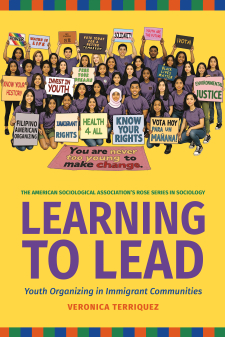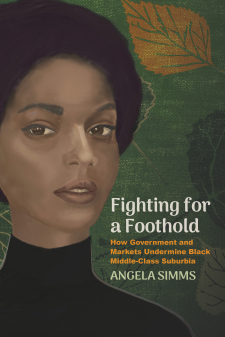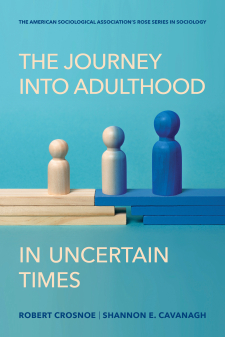Main navigation
 As part of our Election 2012 series, Seth K. Goldman examines the impact of President Barack Obama's campaign on levels of white prejudice. A Russell Sage grantee, Goldman is a post-doctoral fellow at the Annenberg School for Communication.
As part of our Election 2012 series, Seth K. Goldman examines the impact of President Barack Obama's campaign on levels of white prejudice. A Russell Sage grantee, Goldman is a post-doctoral fellow at the Annenberg School for Communication.
In the wake of the presidential and vice-presidential debates, pundits and political scientists alike have dissected the performance and rhetoric of the candidates, hoping to answer one question: Who will win the election? Obviously, this is an important question, but given the historic nature of Barack Obama’s candidacy, we need to also address another issue: Will the campaign to reelect the first African-American president influence white Americans’ racial attitudes? If the 2008 campaign is any indication, it may very well do so. My research demonstrates that during the 2008 campaign, long before Obama's election, levels of white racial prejudice declined significantly.
Using three waves of nationally representative panel data collected during the 2008 campaign, I found that in just a handful of months whites became less likely to rate whites more positively than blacks on three scales ranging from hardworking to lazy, trustworthy to untrustworthy, and intelligent to unintelligent. And although the size of the decline was modest statistically, it was big historically. Between July 2008 and January 2009, racial prejudice declined by a rate that was at least five times faster than the secular trend in prejudice occurring in the United States over the previous two decades.
A True Change of Heart?
These are dramatic changes, but could they be the result of a methodological artifact driven by social desirability bias—that is, did whites become increasingly concerned about looking racist without changing their personal beliefs? Based on a variety of reasons, however, this appears unlikely. As an illustration, consider that in the late summer of 2008 (during the first of the three waves of the panel survey) fully 56 percent of whites rated whites more positively than blacks on the three scales described above. This suggests little aversion to answering the questions in a way that indicates prejudice, probably due to the fact that the measure of prejudice did not require whites to directly compare whites and blacks. The items about the two groups appeared at different points in the survey (with the order randomized), separated by several minutes' worth of items about non-racial topics.
Moreover, although social desirability effects are common in face-to-face and telephone surveys, this study was conducted over the Internet, where such effects are much less common because the respondents do not interact with another person. Nonetheless, as another check, I took advantage of the random order in which whites were asked about whites and blacks. This allowed me to assess whether whites changed their ratings of the second group in an effort to rate the two groups equally. For instance, if fears of looking racist altered whites' ratings, then they should have rated blacks more positively when whites were asked about first (in order to shift closer to a presumably higher rating of whites). Similarly, whites should have rated whites less positively when blacks were asked about first (in order to shift closer to a presumably lower rating of blacks). Completely contradicting the possibility of social desirability effects, neither pattern appeared on any of the three waves of the panel survey.
Explaining the Drop in Prejudice
According to my theory of mediated intergroup contact, exposure to media portrayals of counter-stereotypical outgroup exemplars can reduce prejudice in a way similar to face-to-face contact. Consistent with this idea, exemplar-based models of social judgment suggest that peoples' attitudes about social groups are based in large part on the individual outgroup members, or exemplars, at the "top of mind." As a result, short-term and recent exposure to counter-stereotypical exemplars can improve attitudes about the outgroup as a whole.
The 2008 campaign represents a rare instance in which whites were massively exposed to a clear positive shift in the balance of black exemplars in mass media. Obama became the most salient black exemplar in the world, thus simultaneously reducing white racial prejudice. I found evidence supporting this theory using the panel data and multiple measures of exposure to Obama via mass media. For instance, racial prejudice declined the most among whites who exhibited over time increases in political television viewing, as measured by the number of politically-relevant television programs viewed. Moreover, political television viewers living in states with more television advertising by the Obama campaign exhibited particularly steep reductions in prejudice.
Lasting Effects?
Further, consistent with the unique psychological basis of mediated intergroup contact—but counter to conventional wisdom in political science—the "Obama Effect" produced the largest reductions in racial prejudice among McCain voters, Republicans and conservatives. Although these individuals certainly resisted Obama's explicit political message, consistent with previous research, racial exemplars influence judgments through a passive psychological process, thus minimizing resistance to counter-stereotypical portrayals. In fact, because conservatives tend to have higher preexisting levels of racial prejudice, exposure to Obama countered their expectations of blacks far than those with more positive expectations.
Key questions remain, of course, about the duration of the "Obama Effect." With funding from the Russell Sage Foundation, Diana Mutz and I were able to re-contact a random sub-sample of whites in October 2010. We found that racial prejudice increased in the two years since the end of the campaign, returning to pre-campaign levels. These changes, though unfortunate, are consistent with the theory, which emphasizes recent exposure. After the end of the campaign, both the amount of news coverage of Obama and individuals' political television viewing declined substantially, thus overall levels of exposure to the Obama exemplar declined as well. Nonetheless, among whites who showed increases in political television viewing during this time period, racial prejudice continued to decline.
Have levels of white racial prejudice changed during the last two years of Obama's term? Will the return of high levels of exposure to the Obama exemplar during the 2012 campaign produce the same "Obama Effect" that occurred during the 2008 campaign? We are currently fielding the first of two additional waves of the panel survey to answer these questions.





